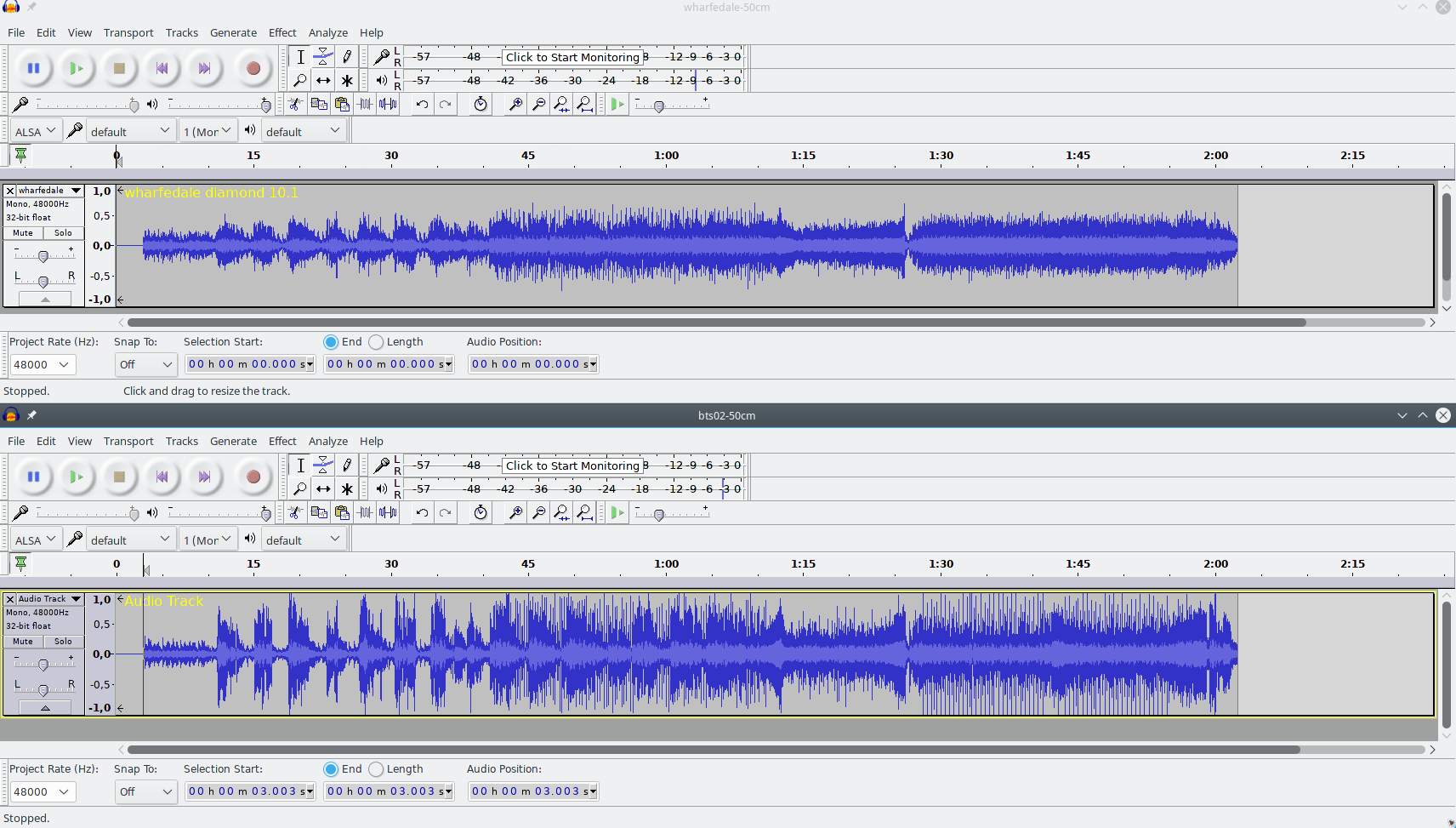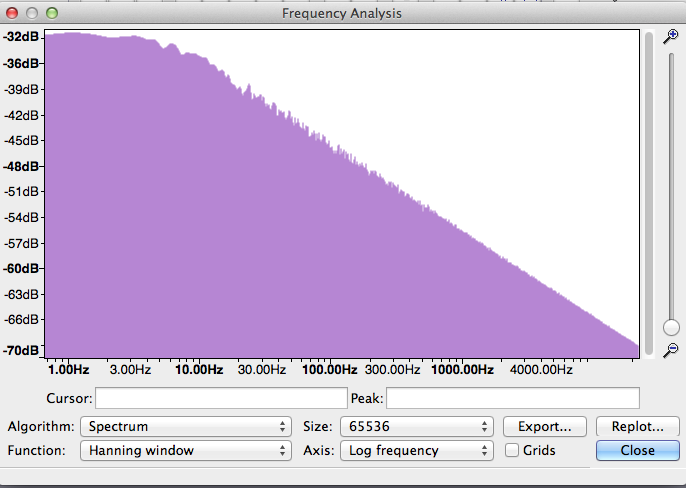I did a small test. Maybe someone with more audioknowedge than me can explain that. I recorded 2 speakers. I used the same microphone with the same distance and also calibrated each speaker on the same db level with a testtone (around 70-71 db shown on the measurement-device).
Now i have two recordings. Top is the better speaker (a wharfedale dioamond 10.1) and bottom is the really bad one (some china 10$ speaker).
Why are the amplitues so different in height. I cant explain that to myself. I attached a screenshot.
Thank you for any hints or help.
Audacity 2.1.3 from ARCH Linux Repo.

The two speakers sound different, right? I bet if you used two different test tones instead of one, the two tones will not match. Try 440Hz and 4400Hz. I bet the cheap speaker won’t do anything at 44Hz.
Koz
Put low level pink noise into both speakers and Analyze > Plot Spectrum. I know you don’t have an echo-free chamber or a perfect microphone, but I bet the two plots will be wildly different, the Warfdale being the more level and even of the two.
This is what a straight analysis of pink noise looks like (click the pix).

White Noise is level and flat, but white noise is a good way to cook your tweeter.
Koz
Ok i understand. I had assumed that. Thank you for you information.
So i guess i could basically use my Wharfedale as reference (for best quality) if i compare various speakers. I want to compre it to Bluetooth-Speakers and most of them will never reach the level of the Wharfedale.
I also recorded a BohseSoundTouch III (a high priced bluetooth-speaker) with better sound. That amplitude is much more closer to the Wharfedale but of course also not as good as the Wharfedale.
I have a standing joke that you should not judge production sound on speakers you can hold in one hand.
What’s the goal? Speakers are notorious for being slippery to evaluate because there are so many variables and they all have to work through your hearing which has an acclimatization process. I bought Boston Acoustics speakers (model no longer made) because I liked listening to them. The models on both sides of this one didn’t sound as good to me. I bought the higher-end model and took it back in favor of this one.
It’s pleasant, but has weak bass, so I added a floor bass speaker to round it out.
Koz
My goal is listening to various bluetooth-speakers first and write my conclusion down. I then also want to compare the plot-spectrum to check if that confirms my conclusions.
My goal is listening to various bluetooth-speakers
That’s the tactic or pathway to the goal. The goal is to present your collected works in a podcast or web publication, make a million dollars and move to a vacation home on the Amalfi Coast.
How are you getting access to various bluetooth speakers?
If you’re more serious than the casual listener of music out to find a good speaker for the veranda, then you’ll need at very least a reasonable soundproof room. Anything you do with a microphone in a living room, especially a modern one with bare wood floor and white walls is going to be of limited value. The instant you open a door or window or move anything, the readings change. If the speakers have shifting dispersion characteristics, the echos alone will destroy your readings. It’s one of the reasons we recommend putting a towel or blanket down on the desk when you present an audiobook.
Are you taking into account the characteristics of the microphone? If it’s a relatively good one, they’re published and you can fold that into your data. Directional microphones tend to not be flat and accurate. Good, flat, non-directional microphones need the soundproof room.
Without going through all that craziness, the best you can do is say how things work in your environment.
Which may be enough.
Make sure the dog doesn’t move through the tests.
You can play back pink noise and test tones and record the result at the same time in audacity by using the Overdubbing techniques.
http://manual.audacityteam.org/man/tutorial_recording_multi_track_overdubs.html
Koz
ok. thank you for the information.

